

After visiting nearly 40 countries, most with our five kids in tow, we’ve learned a few things about traveling internationally. I remember the dread and fear in my stomach when facing our first big international tour.
Your first trip overseas can be nerve-wracking. You might start thinking about what you can expect. Will this new, foreign land be uncomfortable? Will you enjoy this unique experience? Can you find what you need?
Let me assure you right now, YES!
While it’s a slight learning curve, international travel is 100% worth the effort. Experiencing other cultures and ways of living enriches and amplifies your energy and helps you appreciate life in general.
I often get asked for tips on international travel, so I have compiled this comprehensive list of recommendations. Rest assured that after a few international trips under your belt, you’ll soon feel comfortable. You’ll see that life functions similarly worldwide, and you can figure out the rest. 🙂
Let’s explore some tips to help you prepare and enjoy international travel.
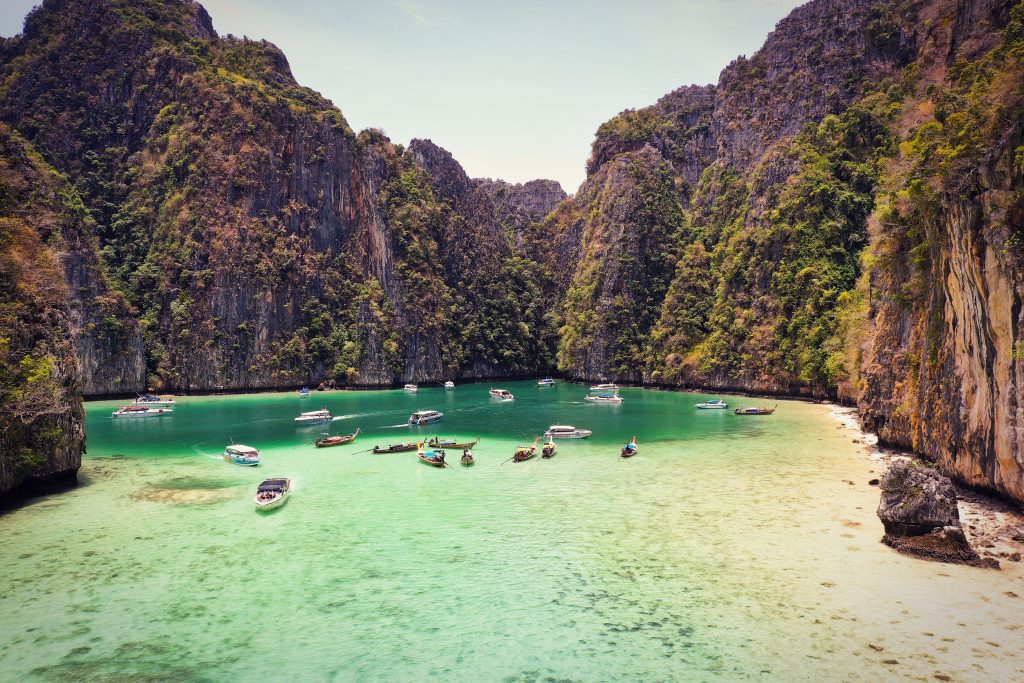
*Disclaimer: This post may contain affiliate links. Opinions shared are my own, and I only endorse products I support. By clicking on any of the links below, I may get a small commission if you purchase at absolutely no additional charge to you. I appreciate your support.*
My number one tip: RELAX.
Travel is challenging. Travel days are the worst part, but the more you relax, the better things will go. Expect hiccups. Expect things not to go smoothly. If, for some lucky reason, you have a smooth travel day, count that as a blessing!
Everything can be fixed, and everything will work out. Even if you miss your flight, don’t have time for food, have cranky kids, your baby cries the entire flight, or can’t get a taxi… it will all work out.
Travel days are the price we pay for travel. Once you’ve had a few days of making fantastic memories, that travel day won’t be anything but a story to tell.
What to pack can be as perplexing as anything else! Here are some of my tips:
2. Check the weather of the places you are going. Any weather app will help you prepare what to pack; cold weather will require more packing room.
3. Think about layering. Instead of loading an oversized winter coat, pack a windbreaker with a sweater or hoodie. We did this in Iceland with sweaters and rain jackets, which was perfect (as long as you aren’t going somewhere super cold). We also utilized thermal underwear in Europe in the winter for outdoor markets, Disney, etc.
4. Try to pack clothes that don’t wrinkle and have nylon material. You want to stretch but still look good.
5. Go for neutral colors if that’s your style. It makes pictures look better, and you’ll probably blend better in the country. However, don’t sacrifice your style; be bold if that’s your thing.
6. We try to stick with only two pairs of shoes per person, but occasionally I’ll go for three. It depends on what we will do (for example, I pack high heels for our formal night on our cruise).
7. You’ll want a smaller carrying bag. It can be a fanny pack, backpack, purse, etc.
8. We have a few travel items we love. See this post for more suggestions! I’ll also include more below specific to air travel.

9. Roll your clothes rather than fold them. You’ll save more space, and they are easier to see.
10. Pack once and then take a few things out—everyone overpacks.
11. Know that you can always buy things there! While it might take a little time, you can find anything you need at your destination. Sometimes our family plans to purchase something in a country, like beach toys, sunscreen, winter boots, etc. We call these our “BIT” items or “Buy It There.”
12. Bring your vitamins. Travel can tax the body with time zone differences, long flights, and lots of exposure to new things. We take a few vitamins to keep our energy up!

It’s easier to go international with a flight to get there. Chances are you’ll be boarding a plane and flying for a long time. Our longest flight was to and from New Zealand, around 12 hours.
Think about that.. 2 to 3 meals, a series of bathroom breaks, and lots of time on your hands! Bring something that can make you busy. I write most of my blog while traveling to kill time.
13. Getting Up. If you are pregnant or have circulatory issues, know that for these long flights, you must get up and walk about once an hour. Thankfully, these long flights come with bigger planes, so you can walk the aisles a bit when there is no food service. It’s common to see; some people even stand around to get their bodies moving. Tip: bring compression socks to help prevent circulation problems.
14. Bringing Your Snacks. You’ll need to bring some of your food, especially if you have allergies or strong preferences. While international flights usually include at least one meal, I’ve noticed since Covid that they are no longer doing anything about allergies. You might not want to, or be able, to eat the meal they serve.

None of these items are necessary, and I would not recommend buying all of them! You’ll find one or two that make the difference for you. Try and see how you like them. If you need to cut it, try another after a while.
15. Travel products we would recommend. Often on a long, international flight (5+ hours), you’ll get a blanket and pillow to use. However, this experience varies greatly. Just this year, we’ve been on flights where you had to ask, others were automatically on your seat, and the pillows and blankets ran out before the back of the plane.
When we do an overnight flight with kids, I will bring items to get them to sleep better. I love this memory foam pillow that turns the seat into a bed for littles. I also love my travel pillow like this one. It’s the first (after many tries) that allows me to sleep while sitting up.

16. In some countries in Europe and Brazil, it’s typical for your gate not to be assigned until it’s time to board your flight. This differs from the USA, where you can often know your gate before arriving at the airport.
Crossing from Newark to Lisbon, a flight we take often, is only 6 hours. Paris to Bangkok is around 11 hours. Denver to Mexico is only about 4 hours.
17. When booking your flight, pay attention to your flight times. Pay special attention to layover times. Any time you change countries (outside of the EU), you’ll need to go through customs, and this can take 20 minutes to several hours, depending on staffing, queues, and employee strikes.
18. Our minimum layover time on an international arrival is 1.5 hours. That is tight! Three hours is more comfortable. You can get through customs and get a meal before your next flight.
On the other hand, our most extended layovers have been 7-10 hours at a time or overnight.
19. If you have a layover of more than 6 hours, see if there is a hotel at the airport where you can stay even for a few hours. If you have an overnight layover, try to book an airport hotel, preferably one you can walk to or take a quick shuttle. Here are some hotel recommendations:
20. We’ve also slept in many airports. For this, I recommend having a blanket or coat on the floor. Choose a quiet area, put on some air plugs, and cuddle with the little kids so you can feel if they wake before you. If you have small children, have them sleep in their car seats.
21. Remember to bring your secret weapon: Melatonin! It eases you to sleep without any lasting effects. It leaves your system within 45 minutes.

22. On the plane, you may be given some customs forms to fill out. BE SURE TO BRING A PEN! Flight attendants don’t have many, and borrowing from your neighbors around you isn’t the most fun to do. Things have changed a bit with Covid, but often customs forms are still needed. In general, they want you to declare the following:
The flight attendants hand out these forms early in the flight, and I make it a rule of thumb to fill them out right when I get them. Too often, I’ve forgotten and am scrambling while landing to fill them out.
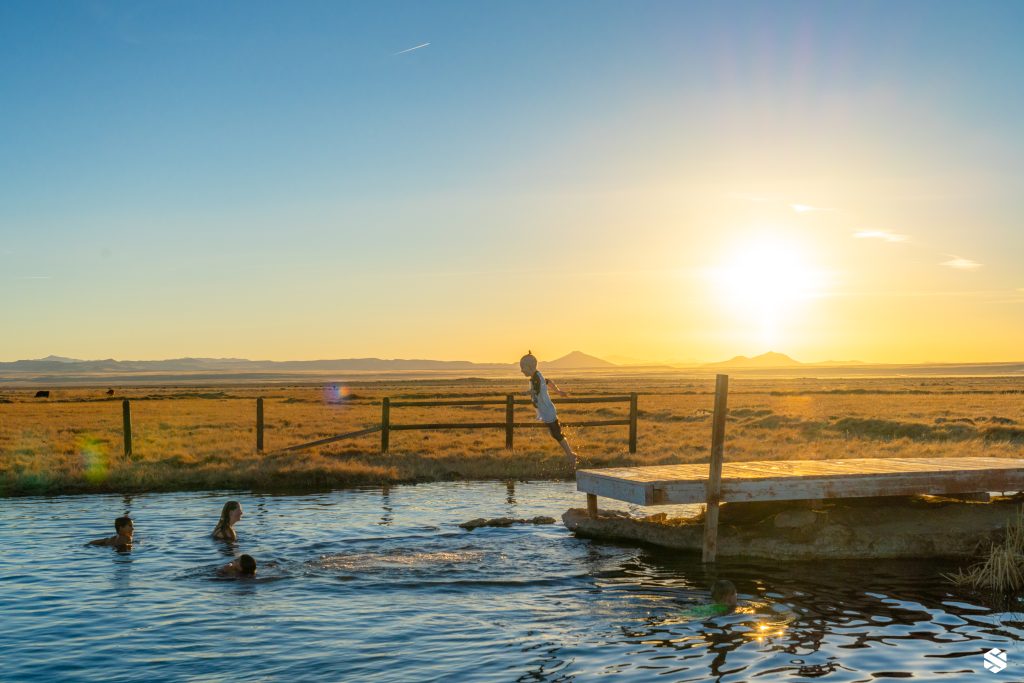
23. Have a note on your phone with every family member’s passport number and expiration date. It is much easier than rifling through them, and I’ve proven it helpful in many situations… checking into flights, foreign doctor’s offices, booking flights, etc.
24. If the forms are one per person, fill in everything but passport info and put it in the corresponding access when done.
25. You can ask the flight attendants for basic help.
26. Often, you’ll need an address in the country. Use your hotel or Airbnb. It’s usually OK if you just put the name of the hotel or the city of the Airbnb.
27. Don’t stress it too much. While these forms are essential, they don’t need to give you a panic attack. Do your best and correct it with the agent later if you make a mistake.

28. All flights arriving from another country are shuttled through a separate part of the airport once you get off, and it will lead to a customs area.
29. Pay attention to signs in the airport (there is often also an employee directing people if you have questions) and go to a “foreign passport” line.
30. Sometimes, if you are a US Passport holder, you’ll have a line grouped with other countries. For example, when we flew from Lisbon to London, we went into a line that included EU passports, Japan, Canada, and a couple of others.
At the desk (or machine), you’ll have someone look at your passport and stamp it. You’ll often need a form of declaration to fill out on the plane coming there.
After your passport is inspected, you can get your luggage. Then you’ll go through another area where you’ll need to declare certain items you might be carrying, like money over $10,000, certain fruits or vegetables, meats, livestock, etc.
31. Do not bring fresh fruits, vegetables, or meats into a new country

Not speaking a foreign language will limit you in a foreign country, but you’ll be surprised at how many people use and speak English. Especially those working with foreigners. Many people worldwide also have had English in school and are kind to your inability to speak the foreign language.
32. It goes a long way to learn how to say “hi” and “thank you” in the local language.
33. Be respectful of the local culture and customs, even if they are inconvenient for you. Don’t expect a foreign land to provide you with a US experience. If you want that, you might want to stay home.
34. Don’t be scared! Most countries are safe, despite how our media portrays them, and there are still many good people around. Yes, you should be aware of pickpockets and those around you in big cities in Europe and South America. However, don’t start your trip filled with fear.
35. Know the emergency numbers of the country you are in. Here is a list of emergency numbers around the world.
36. Get outside for your activities in daylight and stay at night until you are familiar with the area.
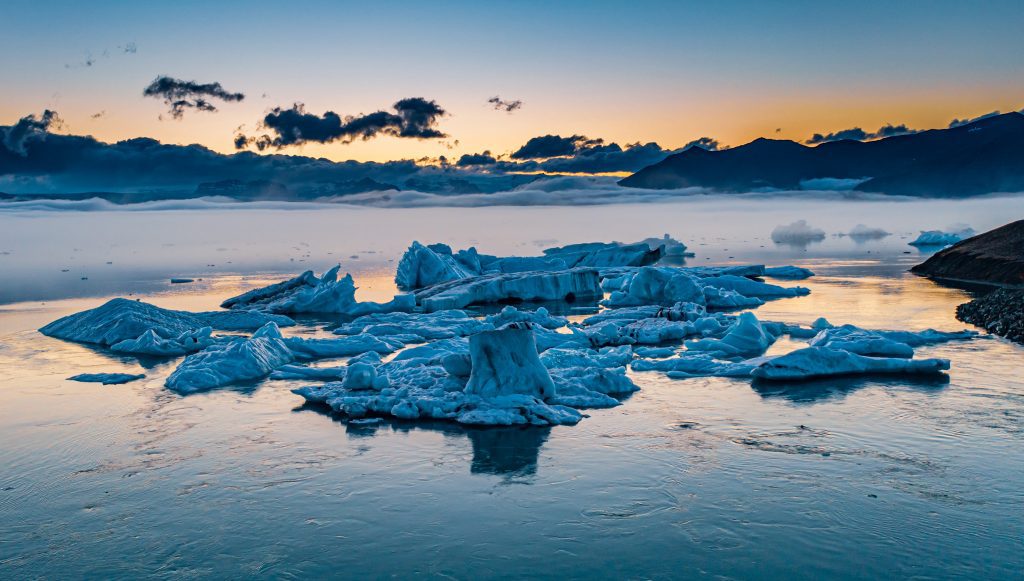
37. Some countries rely heavily on cash (usually second or third-world countries), while others are all credit cards. It’s good to have both.
38. For cash, we use ATMs. We love the Charles Schwab debit card for withdrawing cash in foreign countries. You can get reimbursed for all those foreign ATM fees.
39. Check in your credit card charges a foreign transaction fee. Our does, sadly, and we will soon be applying for this Amex Travel Card. From my research, this is the top travel card. For frequent travelers, the club access is really useful!
40. Try to avoid currency exchange. Don’t go to the currency exchangers in the airport unless you know you have to have cash for your first taxi and there are no ATMs available. The conversion is terrible!
41. Know what your daily ATM max limit is. Most cards are around $500-600 USD, which can mean a lot of cash in a foreign country.
42. Tipping isn’t worldwide. Most people working in the tourism industry will expect tips. However, many countries in Europe don’t tip regularly. Don’t feel like you need to, although most countries in Asia and South America do.
43. In many third-world countries or with street vendors, it is imperative that you negotiate. They will spot you a mile away as a tourist and charge you a premium price upfront. Offer half, then negotiate up to something you are still comfortable with. Be willing to walk away! I did it many times, but I’ve also negotiated a lot.

Don’t be afraid to try new foods! Eating your way through a new culture opens windows of understanding and can give you a new love for food you didn’t have before.
I forced my family to try escargot as a dare on our first trip to Paris; it is now one of our favorites! (Note, if you like mushrooms, you’ll love escargot too).
44. Most restaurants will have an English menu, but if not, use your handy Google Translate!
45. Watch what the locals are ordering and give it a try!
46. Know that “American” food can be found everywhere if you want a comfort meal. McDonald’s is also everywhere! It’s very good in Portugal and has a gluten-free menu.
47. Grocery stores are intimidating in a new country, but be patient. You’ll find things you love. Bring or buy your reusable bags! Many places are becoming more conservative in using disposable bags.
48. In big cities with tons of competition, it’s hard to find a bad restaurant. They don’t stay in business.
49. France has the best food in the world, in our opinion. 🙂

Renting a car can add a lot of freedom to your trip as well as a lot of stress. Depending on the location, you want to consider how useful it will be to have a rental car.
50. Parking in foreign countries can be stressful but doable.
51. We didn’t rent cars in big cities in Asia and Europe unless we had plans to explore outside the city.
A good compromise is to rent a car for part of your trip.
52. Use Google Maps to find “parking near me.”
53. Use Google Translate to understand the parking signs. In Japan, we found out that only certain SPOTS in the parking lot were overnight, and we paid a fortune leaving our car overnight in the wrong spot.
54. Try to rent a car that fits into parking garages. It will be your best option in the city, which can be tricky for our family of seven!
55. Have your cash and coins ready for parking machines.
56. Brush up on your parallel parking skills!
57. Take a picture of where you parked and mark your location in Google maps. We forgot our spot in the parking lot several times, and we were even convinced someone might have stolen our car!
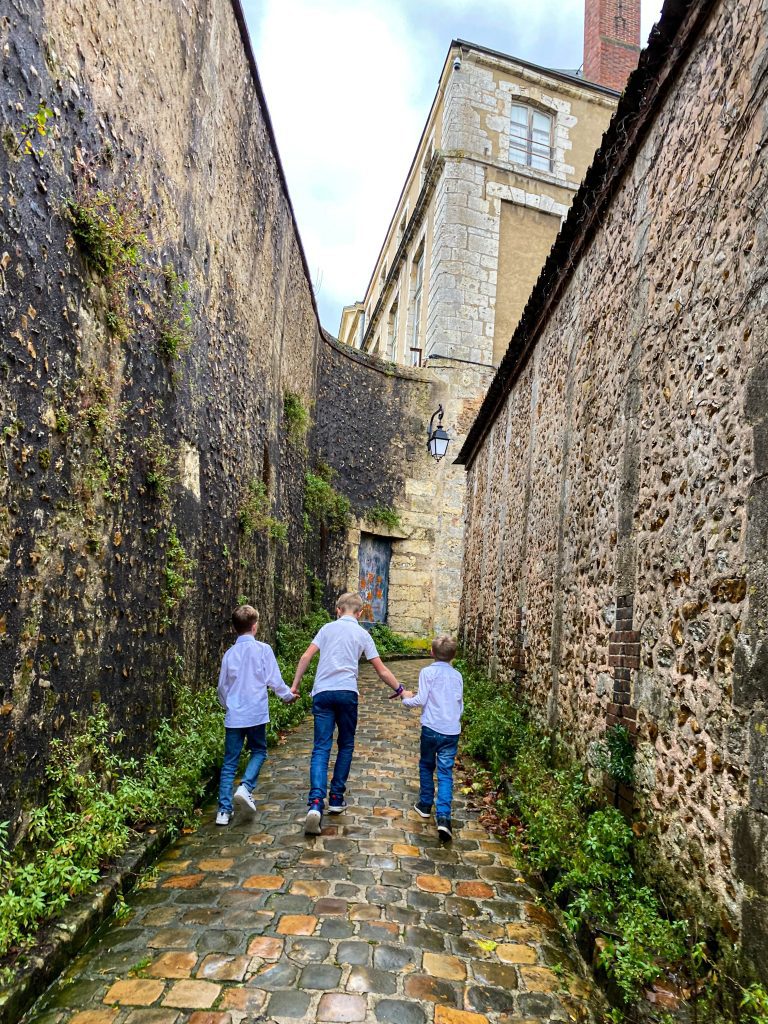
58. Research the appropriate ride-share apps for where you are going. For example, Rome doesn’t use Uber. Instead, they use FreeNow, while Asia uses Grab a lot.
We love ride-share apps for a few reasons:
Downsides of ride-share apps in foreign countries:

59. Several big cities are VERY walking friendly. Big cities cater well to pedestrians from South America to Asia to Europe. Many locals don’t own cars.
60. Use Google Maps to get various options to reach your destination. Type in your destination and toggle between the bus, walk, and car symbols to see the times and steps. (Insert screenshot here)
61. A stroller is challenging in most places, and we always recommend a baby carrier.
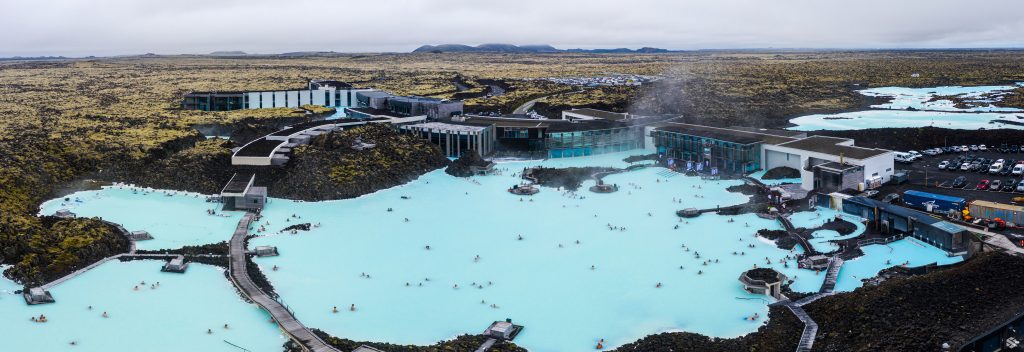
62. If you see a “factory tour” in your itinerary or as an activity offering, we wouldn’t recommend it. You’ll be taken to a gift store, and your driver might get a commission on what you buy.
63. Kickbacks are pretty standard. In Bali, we hopped into a taxi on a busy night, and he didn’t want to take us and “sold” us outright to another cab. They exchanged the money for our ride without shame.
64. Bathrooms often require payment, from a few cents to a few dollars per person. Kids are sometimes free and other times not. Having some change ready is always a good idea, although you can use a contactless credit card in larger cities.
65. Know that outside of the US, the first floor is the second level, and floor 0 is ground level.
66. Like in the US, many buildings don’t have a 13th floor.
67. Having a hotspot in a new country can be very helpful but isn’t necessary. Your cell plan will probably work (our T-Mobile plan already includes international roaming and texting for free). However, your data might be slow. It’s a good idea to have a hotspot device handy to insert a new SIM card. It can be an old phone (unlocked) or a hotspot device. SIM cards are sold at most airports when you arrive and throughout the cities.
68. Be adventurous! International travel pushes you out of your comfort zone, and that’s the goal. See a new way of life, evaluate your own, think of what you might want to improve, and walk away a better person.
Planning for your first international can be as demanding as you think but it will all be worth it!
Xoxo,
Leslie
Plan your first international trip and get some budget-friendly tickets from Booking.com, Skyscanner, Kiwi.com, or Expedia
Find a nice place to stay from Booking.com, Expedia, or Vrbo, (we also love Tripadvisor and Hotels.com)
Discover the world through exciting activities from GetYourGuide, Airbnb Experiences, or Viator
Need to rent a car? Visit Rentalcars.com.
Get insured while traveling with World Nomads
Capture your best travel memories as we do with a GroPro, Sony camera, or our favorite drones: DJI FPV, Air, and Mini
Check out your travel necessities from a comprehensive list of all the 7Wayfinders Travel Must-Haves. Click Here!


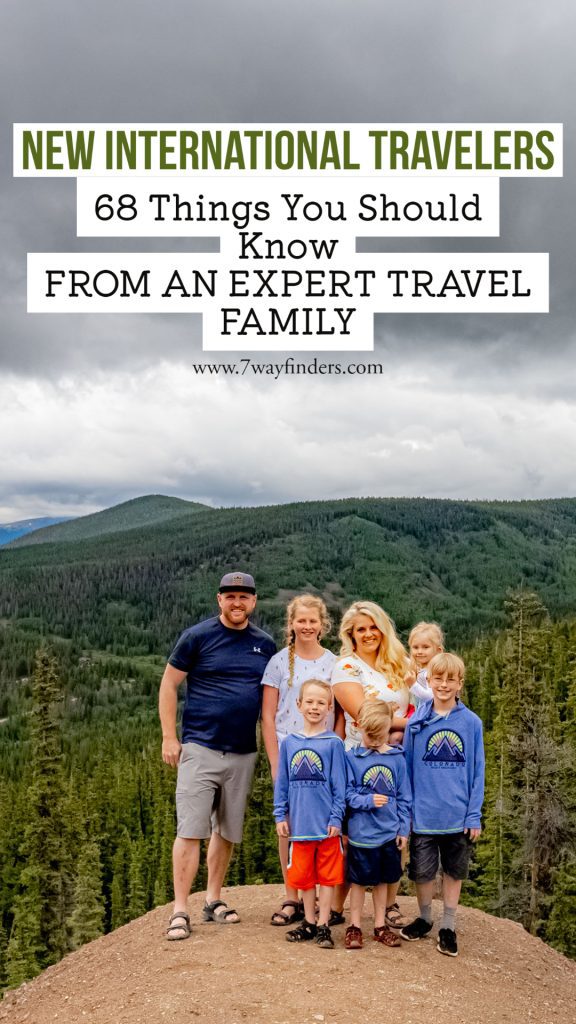

Essential Tips for Visiting The Top Of Europe in Switzerland With Kids
Best Apps For International Family Travel
18 Beginner Tips for International Family Travel

9 Comments